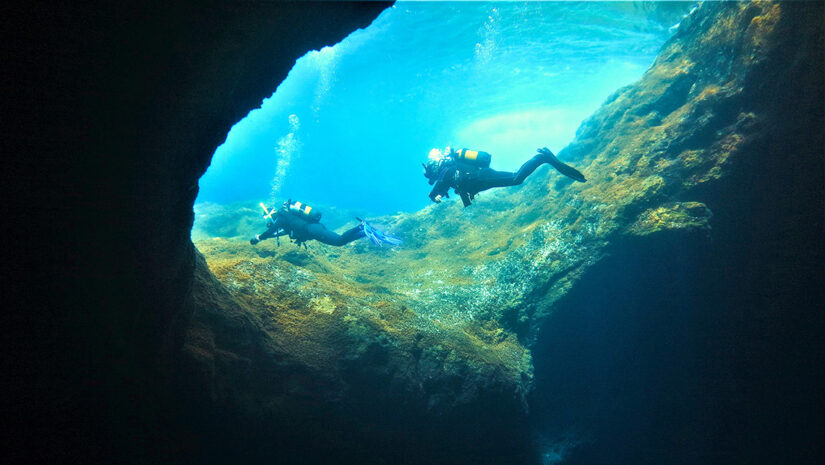In our previous article on cave diving, we discussed various features such as springs, siphons, sinkholes, and cenotes. This article will explore the differences between sumps, mines, ice caves, blue holes, sea caves, lava tubes, and coral caves. Each of these represents a distinct type of cave. Depending on the region you explore, you may encounter different underground waterways.
Sumps
These are water-filled passages in dry caves. This is one of the original, less refined originations of sidemount diving. Unlike cave divers, most sump divers try to move from one dry cave area to the next dry area. Gear is typically different because a sump diver must crawl and climb through cave systems instead of swimming.
Mines
Flooded mines have been gaining in popularity because they allow people to explore “caves” in places where natural caves do not exist. Mines are considered by many to be more inherently risky to dive than natural caves because they are created by man without the intention of them eventually being flooded and explored by divers. Equipment, cables, and other equipment pose additional risks.
Strip mines typically don’t have an overhead environment, whereas tunnel and shaft mines may. Tunnel mines are probably the closest to traditional caves because they may have one central passageway with multiple side passages.
Ice Caves
Ice caves are both incredibly rare and dangerous. They form in icebergs or glaciers when water flows through them. Aside from hypothermia, due to the constant freezing and refreezing of ice, it is rare to find a diver willing to explore an ice cave.
Blue Holes
Similar to solution caves, blue holes are formed by coral growth and dramatically different water levels during ice ages. Some blue holes can get to be well over 200 feet deep. While the hole itself tends not to be an overhead environment, there may be many side passages through the wall of the blue hole that qualify as caverns and caves.
Sea Caves
Sea caves are formed by tidal motion eroding a sea wall or cliff. They don’t typically extend very far, although a few exist that were formed at times when sea levels were significantly lower. Due to tidal action, these caves are considered tricky to dive.
Lava Tubes
Lava tubes are the youngest form of the cave because they are formed when lava flows across the surface, the outer layer cools and hardens, and the inner layer continues to flow through. Behind the flow, the lava may leave a series of tubes similar to solution caves. If the lava tube floods, it becomes accessible to qualified cave divers.
Coral Caves
Most tropical divers are familiar with coral swim-throughs, archways of coral that you can swim through to explore. Those swim-throughs can extend to a point where you can’t see natural light or the entrance, making them caverns or caves.
Now that we have learned and explored the type of cave you might be interested in, we will discuss potential hazards in underwater caves in the next part of our Cave Diving series!





